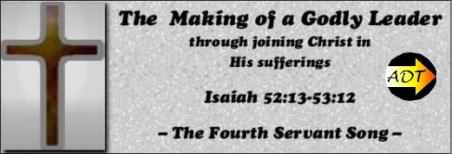 |
The Making of a Godly Leaderby Rev. Paul J. Bucknell |
An Overview of Isaiah 52:13-53:12
The Fourth Servant Song
Purpose
This ADT series is about developing godly leaders. We are not interested in the quantity of Christian leaders per-say but their godly character. It is this godlike aspect that God is looking for, and the one which we are interested in developing. We have a two-prong approach. We are first interested in each of us being a godly leader. Secondly, we want you to be able to train such godly leaders. We will show you how to do this in other training material. This Isaiah 53 series focuses on the first goal of understanding what a godly leader is and by God's grace bringing ourselves to be those kind of men. (Click to see a proposed Isaiah 53 weekly schedule.)
Getting Below the Surface to the Heart
We need to remember the example of King Saul. Head and shoulders above all. Strong enough to fight any enemy and to lead any army. But God rejected him as king because his heart was not dedicated to Him. The condition of our hearts as pastors and church planters is critical to finding God’s blessing. God rejected King Saul and chose another.
God chose a young unknown man named David. This shepherd boy was looked down upon by his brothers but chosen of God because of his heart. No one else knew about this lad, but God did and sent Samuel the prophet to anoint him. Psalm 4:3 says, “But know that the Lord has set apart the godly man for Himself. the Lord hears when I call to Him.” We want to train the man who when he cries out to God that God hears him. David knew of this. It is these men whom God gathers into His presence. Psalm 15:1-2 says, “O Lord, who may abide in Thy tent? Who may dwell in Thy holy hill? He who walks with integrity and works righteousness.”
This pursuit is not a one time job. School and training can’t do it. It is a life time pursuit. In Advanced Discipleship Training (ADT) we identify what those main areas are and train you to cultivate these values throughout your lives. Each of us are called to build up one other. It is these Christ-like characteristics that we strengthen in each other. We shape the heart, supply skills and vision and together seek Him in His Word.
We must ask ourselves, “How can we become a more godly leader?” We want to lead you step by step on how to do this. We will combine not only passages that deal with specific areas that often hold us back as ministers of the gospel of Christ in our own lives, but also point out how to train up new leaders in your congregation. Think of it. What would you congregation be like if you could replicate your devotion, character and vision in three or four other men? The expansion, trust and fellowship would be so great. We will look at the practical steps needed to make these men.
A godly leader is best defined as one that lives close to the Lord. He lives in God’s presence. He has been changed by God’s person and Word. He loves what God loves and hates what God hates.
Isaiah 53 & Dead Sea Scrolls
We will be meditating on one of the most holy passages in the Bible during our discussion on this Isaiah passage. It is hard to definitively say that this passage is the most holy passage, as all of God’s Word is holy. But indeed Isaiah 53 has held a special place in the heart of God’s people throughout the centuries. Many rightly use the prophecies of Isaiah 53 to affirm Jesus as the Messiah. Rightly so. Christ's sufferings many hundreds of years before He died on the cross are depicted with extreme clarity in this chapter. Others use Isaiah 53 to witness to others about the significance of Christ's work on the cross. Can there be any clearer discussion than here on the meaning of the cross and our salvation either than in Romans? Probably not.
Critics thought this clarity was due to textual changes. They alleged for at least 150 years that this portion of Isaiah was changed after the fact. The problem was that we could not prove otherwise even if our faith believed its purity. That is, until a discovery by a shepherd boy in 1947 led to the finding of what we now know as the Dead Sea Scrolls. Altogether there was found tens of thousand os scroll fragments from eleven caves found over a ten year period. In all they were part of about 1000 compositions in Hebrew, Aramaic and Greek. They consisted of Biblical portions, Apocrypha and sectarian such as pietistic ordinances. They were not all holy books. It was a library that was found. But among these many scrolls were found the Great Isaiah scroll.
You should expect that they excitedly turned to Isaiah 53 to see what it said. This scroll was dated around 300 B.C. The earliest one before this was the much-doubted Codex Lennigrad dated about 1000 A.D. There was a 1300 year gap between them. What did they find? A largely different text? No. Just the opposite. Of the 166 words in Isaiah 53 there were only 17 letter differences including 10 spelling differences and the present of the word ‘light’ in 53:11. All the detailed clarity found in Isaiah 53 was now proved to be original and very prophetic.
It was this very passage in the Jewish scriptures that the Ethiopian eunuch was reading and had questions on. The Holy Spirit sent Philip there to lead this seeker to salvation. He asked who this passage referred to. Now the passage of Scripture which he was reading was this:
“HE WAS LED AS A SHEEP TO SLAUGHTER; AND AS A LAMB BEFORE ITS SHEARER IS SILENT, SO HE DOES NOT OPEN HIS MOUTH. (Acts 8:32).
Philip no doubt asked him, “Did you hear what recently happened in Jerusalem? Did you not hear of Jesus the Messiah?” We don’t know what he actually did know, but we do know that the eunuch was quickly convicted that Jesus was the Messiah and asked for baptism.
Before going on with the message though, we need to pause and give a much needed introduction to this prized section of scripture.
Isaiah's Pointed Structure & Isaiah 53
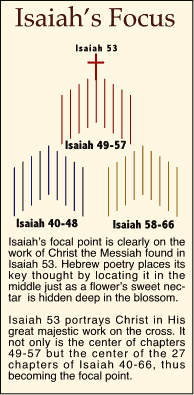 We have been looking at the last of four Servant Songs. This passage is amazingly designed so that the heart of the Gospel is specially exhibited like a framed picture on a wall. Hebrew poetry uses the physical placement of the lines to reveal parallel thoughts. The outer two thoughts run parallel, then the next inward set of thoughts run parallel. On and on it goes until it gets to the inner core–the singular thought. This is the chief emphasis.
We have been looking at the last of four Servant Songs. This passage is amazingly designed so that the heart of the Gospel is specially exhibited like a framed picture on a wall. Hebrew poetry uses the physical placement of the lines to reveal parallel thoughts. The outer two thoughts run parallel, then the next inward set of thoughts run parallel. On and on it goes until it gets to the inner core–the singular thought. This is the chief emphasis.
The second half of Isaiah is composed of 27 chapters and is carefully presented to the reader. We need to ignore the chapter and verse numbers which were later contrived. They are not ‘scriptural’ but simply tools helping us quickly locate scripture passages. The 27 chapters are separated by a marker. Each of these three markers describes the wicked with no peace (48:22; 57:21; 66:24). We can see this division in the diagram on the right where the 27 chapters are separated into three sections, each consisting of nine chapters. When we see these three sections through the eyes of Hebrew poetry, then we see how the second section, chapters 49-57, forms the inner core. But we must take a closer look.
The Fourth Servant Song (Isaiah 52:13-53:12)
Chapter 53 forms the focal point of this center nine chapters and of the overall 27 chapters. Already we begin to see how the whole of Isaiah points to this prized chapter. But we must go yet deeper. The outer ideas protect, introduce and shield the inner ideas. Each of the outer two outer shields present a parallel idea. We will see the author’s emphasis through Hebrew poetry at several different levels. With each level, we uncover the majesty of this section of scripture.
In this inner chapter (Isaiah 52:3-53:12) there are five stanzas, each have three verses.
A. The Accomplishments of the Servant (Isaiah 52:13-15)
B. The Confusion of His Mission (Isaiah 53:1-3)
C. The Pain of His Suffering (Isaiah 53:4-6)
D. The Willingness of Him to Suffer (Isaiah 53:7-9)
E. The Glory of the Servant’s Suffering (Isaiah 53:10-12)
Stanza 1 and 5 form the outer parallel stanzas. Stanzas 2 and 4 are the inner parallel stanzas. Stanza 3 is the heart stanza which conceals the most sensitive and yet wonderful part of God’s redemptive plan. We will look at the three inner stanzas today. Sections 2 and 4 give us a good understanding of the events surrounding the Servant’s death. The Servant’s death on the cross is carefully placed at the centerpiece at which everyone looks. Of course the closer we look, the more we are mystified at what we find. Many questions are raised as well as questions that we never asked are being answered in a most profound part of God’s Word.
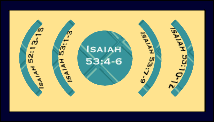 This study is much like staring at the open blossom of a beautiful flower. The outside is beautiful. Pedal after pedal closely bound, beautifully designed and marvelously colored and textured. If you are attentive, you will note the even more delicate master centerpiece of its own special design and delicacy. It is here the reproductive elements are deeply seated inside the blossom. In the diagram at the left I have suggested thinking of the parallel sections as shields.[1] The progress of thought and emphasis is hidden by its own cultural-linguistic expression. It is here in 53:4-6 that we discover the centerpiece of God’s vibrant love. The love of God is not only revealed but reproduced. We will return to this later.
This study is much like staring at the open blossom of a beautiful flower. The outside is beautiful. Pedal after pedal closely bound, beautifully designed and marvelously colored and textured. If you are attentive, you will note the even more delicate master centerpiece of its own special design and delicacy. It is here the reproductive elements are deeply seated inside the blossom. In the diagram at the left I have suggested thinking of the parallel sections as shields.[1] The progress of thought and emphasis is hidden by its own cultural-linguistic expression. It is here in 53:4-6 that we discover the centerpiece of God’s vibrant love. The love of God is not only revealed but reproduced. We will return to this later.
We always hide treasures in special well-conceived places. I hope we have the same seeking, pondering and desirous heart as the Ethiopian eunuch as we study these verses for then the Holy Spirit will mightily move in our hearts. The heart of the Gospel is clearly revealed in these verses. The Messiah’s work on the cross is unashamedly displayed. God uses suffering and pain to create even yet greater wonders where God’s love is ever so apparent.
 The intense suffering that the Chinese have endured over these last years has resulted in a strong emphasis on the cross. They have seen how the cross becomes not only the focus of the gospel but a practical means by which they can courageously and yet mercifully work through all the difficulties that they face in their ministries. This is what we are focusing on too.
The intense suffering that the Chinese have endured over these last years has resulted in a strong emphasis on the cross. They have seen how the cross becomes not only the focus of the gospel but a practical means by which they can courageously and yet mercifully work through all the difficulties that they face in their ministries. This is what we are focusing on too.
I must confess that many of you have faced severer persecution than I. God has chosen you as His special appointees to find the greatest delight in the work of Jesus. I humbly come after you and honor you. My sufferings have not yet entered the stage of being hit or losing great amount of property. I only have faced curses, risks to my family, antagonism, threats, empty pockets, illness and rejection. But no matter what we face in the days ahead, you and I must have the foundational theology to handle the difficulties of life that come upon us. We might feel as if we are alone, but no. We are never alone. Jesus has gone on ahead of us as our pioneer of faith. He is preparing a place for us where there will be no tears, pain or sorrow.
Isaiah's Four Servant Songs
Our quest for godly leadership must be found in pursuing Jesus Christ. This passage from Isaiah 53 is the last of four ‘Servant Songs.’ All four are easily discovered as one reads through the second half of Isaiah. They are not grouped together, but each is carefully placed in its own context. Each song reveals a bit more about the True Servant who gives His all to accomplish God's great purpose. This passage that we are now discussing is known as the Fourth Servant Song. Let’s look at the theme of each of these Servant Songs.
Servant Song #1 |
42:1-4 |
His Person |
Servant Song #2 |
49:1-7 |
His Calling |
Servant Song #3 |
50:4-9 |
His Determination |
Servant Song #4 |
52:13-53:12 |
His Availability |
Unfortunately most Christians turn to this passage to only guide them for instruction on prophecy and salvation. It does provide a clear discussion of the work of Christ, of course. There is perhaps no clearer place than this to get a grand perspective of the preciousness of our Savior and His work on the cross. But there is much more to learn here.
We not only learn a lot about the work of Christ but also the ministry of Christ. We not only learn to study what salvation means here but also how we should carry out our ministry. This passage after all focuses on the availability of the Servant. He made Himself willing to do whatever His Master would want, whenever He wanted it and however He wanted it done. Jesus pointedly said,
"Whoever does not carry his own cross and come after Me cannot be My disciple“ (Luke 14:27).
What does the cross stand for here? The cross is not here used as a symbol of pain or torture, but of the willingness to endure all things to complete God's will for one's life. It is the grand design of our lives to esteem the will of God over every one of our own preferences. Of course, there is no test like pain. We face many tests over the years on whether we love God with all of our heart, soul and mind and strength, but it is the test of pain and rejection that Jesus suffered so greatly that perhaps serves as the hardest test of all.
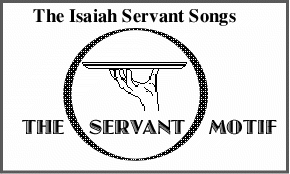 There are two parts to carrying the cross. The first is to repent from our own selfish ways. These things that we repent from are precisely the things that keep us from prioritizing God’s will. Secondly, we are to make doing His will a priority in our lives.
There are two parts to carrying the cross. The first is to repent from our own selfish ways. These things that we repent from are precisely the things that keep us from prioritizing God’s will. Secondly, we are to make doing His will a priority in our lives.
Jesus said, “My food is to do the will of Him who sent Me, and to accomplish His work” (John 4:34). What is food but that which keeps us living and functioning? His desire was to accomplish God’s will above all even if it meant giving up His life.
| Jesus is portrayed as the willing servant who died for others because someone else asked Him to do so. Quietly and humbly He went to the cross for the sin of many. His death justified the many people, enabling these wayward to become the children of God. Let’s give thanks for God’s marvelous grace!!! |
It is this test that Jesus Himself went through and endured so that He could and would please the Father. We are to learn from Christ. Note how Hebrews 12 says we are to learn from Christ.
Let us run with endurance the race that is set before us, fixing our eyes on Jesus, the author and perfecter of faith, who for the joy set before Him endured the cross, despising the shame, and has sat down at the right hand of the throne of God. (Hebrews 12:1-2)
We run after Christ. He is the author of our faith. I suppose this refers to His work on the cross. As I said, we will discuss this important aspect of our faith. This is where faith begins. But Christ also is the perfecter of our faith. He is the One that shows us how to live out our lives and ministries.
Many people talk about the cross, but rarely do they come to grips with what really happened there. The Messiah put aside all His choices as God's Servant and reserved all His remaining energies and time to do all that pleased God. As a result many would be blessed beyond imagination.
Each message shall pursue one section of this fourth Servant Song. We do not need to be concerned that it starts in Isaiah 52:13. In the original there was no chapter or verse numbers. They were put in at a much later date. The five stanzas of this fourth Servant Song are wonderfully designed as we will together look at later. We out of necessity have set up these five stanzas as three sections. Please pardon us. However, we will stay true to its original design. We will not only observe how Christ served as our Savior but also as our Lord. He does not only provide salvation for us but also shows us to how to live out godly lives (sanctification). We will note three overall characteristics of a godly leader.
1. A Godly Leader Accepts God’s Design for His Life (Isaiah 52:13-15)
Understand the overall process God trains His people through difficult times (parabola - U). We will be able to get a great overview of our whole lives and ministries so that we will not get locked into a sinful mindset that weighs down upon us. The vision God has for our lives is through faith lifted up and so enables us to live above life’s difficulties.
2. A Godly Leader Endures through Hardships (Isaiah 53:1-9)
Understand how Christ endured different kinds of hardship. We will reflect upon the variety of difficulties that Jesus went through and see that they did not hinder His ministry. What we often think is necessary for an important ministry is not that important after all. On the other hand, we will focus on what is critical to a great ministry.
3. A Godly Leader Embraces God’s Greater Purposes of Hardship for His Life (Isaiah 53:10-12)
Learn to live in hope despite oppressive situations. We will begin to find the right way to understand and perceive our hardships. But even more, we will see how embracing God’s greater and more glorious purposes come to fruition from such situations.
We will discover many new things about the Lord as we go through this fourth Servant Song. It will above all be a humbling time to see how much our Savior endured for our sake. But hopefully at the same time, we will all the more fix our eyes on Jesus Christ and increase in our confidence in the way that the Father led Him for it is the same for us. We all are to be fully available to do our Father’s will no matter what the cost.
Related teaching and study materials for the whole Isaiah 53 series are provided below. Other reference materials including study questions will be provided later at the end of each stanza. To continue on to the study of Isaiah 52:13-15.
Teaching Themes in Isaiah 52:13-53:12
Below are some of the major themes discussed in this fourth Servant Song.
• Christian life parallels Christ's own life complete with sorrow and rewards. • In order to accomplish a greater good, suffering is sometimes required. • Each Christian should prepare his or her heart for enduring any suffering needed. • God gives extra grace to meet the needs of the difficult times. • Servant leadership occurs when we set our hearts on exalting others. • Christ Jesus died as a substitute for our sins that we might be set free. • A joyful attitude should accompany any stresses and difficulties we face as His people. • Suffering for God's people is not a mistake but a strategy including martyrdom.• God's intention is to bless His people along with His Son. Suffering is sometimes needed to maximize this blessing.
Week Study Project: "Becoming Totally Available"
Purpose |
Dedicate yourself to go through any suffering the Lord might ask you to bear. |
Means |
By examining different aspects of our life with the past and the future in mind we can make deeper commitments to carrying the cross and following Christ. |
Assignments |
Preparation #1
Preparation #2
Preparation #3
|
Other Related Resources
Becoming an Overcomer
|
Below are other web pages that one can refer to while reading through this study on Isaiah 53.
Jesus, The Pioneer of Humility (Philippians 2:3-11): Developing a right view of self.
Faith into Faithfulness (Philippians 2:3-5): The process of developing a right attitude.
The Secret of Humility (Matthew 18:3): Decrease and Increase principle.
The Pattern of Humility in Jesus: Blessing and trouble!
Five Kinds of Humility: Sickness, sin, design, persecution and death.
Humility and Leadership: (Matthew 20:16-28): Great Men.
Dying to Self: (Romans 6-8): Key to Christian Living.
Moses and Humility: (Psalm 90): The Most Humble Man on Earth.
Tragedies and Judgment: Answers for many questions on suffering.
Job: An Outline and Overview, Job's Purpose, Counseling a Suffering Person
Error Detection in Isaiah 52:13-53:12
Below are a few areas we can specially think about as we go through this scripture passage. They are popular but unbiblical and therefore hurtful philosophies of life. We could extend this section into faulty concepts of Christ's atonement but for now limit it to a few areas of discussions. Each of them are written with the hope that they will be carefully analyzed through the eyes of Isaiah 52:13-53:12 and especially on how God chose to work through His faithful Servant. Add to them as appropriate to your own context.
Prosperity Theology
Prosperity theology develops only where wealth exists. These false teachers seclude themselves from the rest of the world. They forget the church is worldwide and think of their theology simply in its small wealthy box. The poor are locked into impoverished areas. Does God want them rich? Are they weak in faith because they don't share in the riches of the world? Certainly not.
The ‘U’ cycle discussed in 52:13-15 reminds us of God’s prosperity pattern. There is a down cycle as well as an upward one. This passage teaches us that rewards are to be looked at as results. They come at the end of misery and oppression. We must accept the fact that prosperity is the natural state. Christ started with everything and ended up with more. God wants to prosper His people.
Those involved propagating this theology however, forget that Christ had to pay the dues. He suffered. He went without - at least in the sense that He had a lot. And it is common that God's people also suffer.
Christ’s life is a pattern for us. We should be patient for the day when God will lift us up. It will come, perhaps only in eternity. We can be patient. We don't beg for poverty. We refuse to get embittered over our difficult situation. Whether wealthy or poor, we wisely use our money and resources. God has appointed us his stewards. He holds us accountable, and one day we will be judged accordingly.
Healing Theology
Healing theology largely derives its steam from Isaiah 53:5, "But He was pierced through for our transgressions, He was crushed for our iniquities; The chastening for our well-being fell upon Him, And by His scourging we are healed."
There is power in Christ's atonement. Those who believe in healing at all must come back to the power of the Spirit active in the lives of people. We do not object to this. We approve of this ministry that Jesus exercised and believe there is far too little faith to accomplish the healing of so many sicknesses and diseases.
On the other hand, there is the insistence of some to believe that everyone should be healed. We see God's greater purposes at work just like in suffering. We indeed suffer much more than we need. But perhaps because of this insistence on sinful living, we need to suffer a greater rebuke.
We can get a clearer perspective of this whole issue if we think of death. The atonement has removed the curse but the presence of death is still present. The resurrection will overcome the pains and stains of death. It is virtually gone (“He who believes in me shall not die.”) True healing comes from the way truth corrects our behavior and releases us from all sorts of diseases. The atonement takes our sin and stubbornness away and releases us into a new life. The more dramatic and powerful our attention to the ways of the Spirit, more healing will come.
In the end, we must accept the fact that God does bring His people through difficult times. Job is a good example. Paul with his eye problem is another. Timothy had a stomach ailment. Some righteous people suffer but one day will find full healing and life. On the other hand, if we prayed and trusted more in the Lord, we would have many more healings.
Love-limited Theology
Some people have only experienced oppressive situations in their families while growing up. Even though they might have experienced God's love in salvation, they do not understand the greatness of God's love and how He lavished His love on them in Christ. They conclude that a life of suffering is what He desires. This is not quite the fatalism of Islam, but it can get close to it.
Through Christ's example, we find that God wants His children to deeply know and be affected by His great love. And though He sometimes brings them through difficult times, He is always with them. Even more, the Lord delivers them and lifts them up and delights in giving great rewards to them for their faithfulness. This is the pattern that we see in Isaiah 53. Because of God's ample grace, we are beneficiaries of His eternal love.
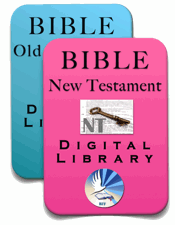 Most of BFF articles such as this one is nicely formatted for printing. Check out the great number of articles on the BFF Biblical Training Libraries all for one low cost. Make sure you check out the deal! Most of BFF articles such as this one is nicely formatted for printing. Check out the great number of articles on the BFF Biblical Training Libraries all for one low cost. Make sure you check out the deal! |
Rev. Paul J. Bucknell
NASB used
[1] This is my best way to simply describe this parallelism, not parallel circles but parallel shields.